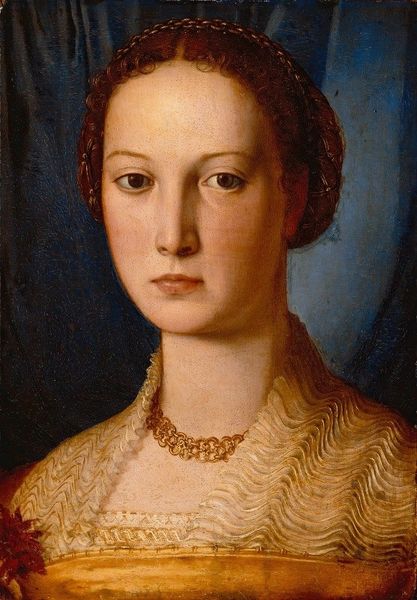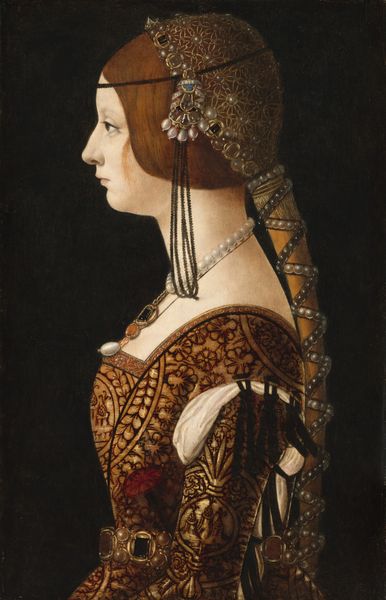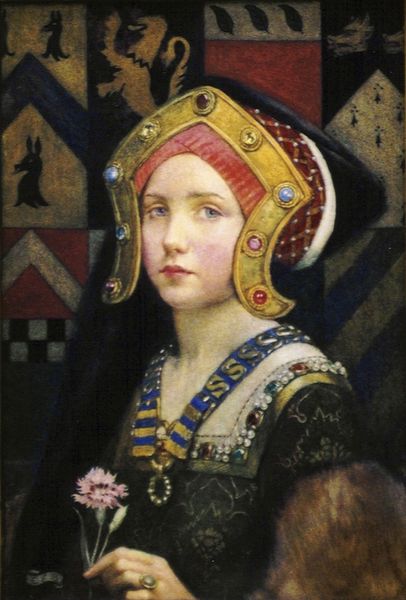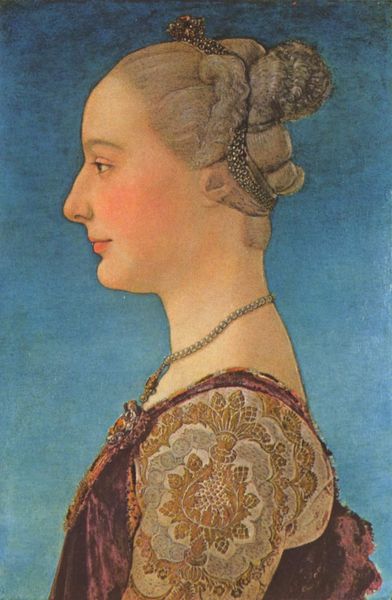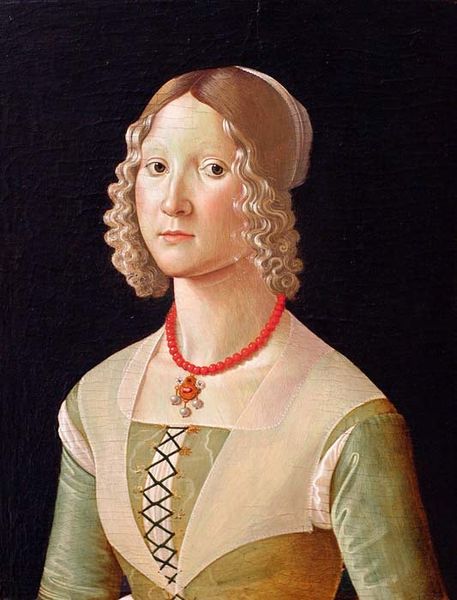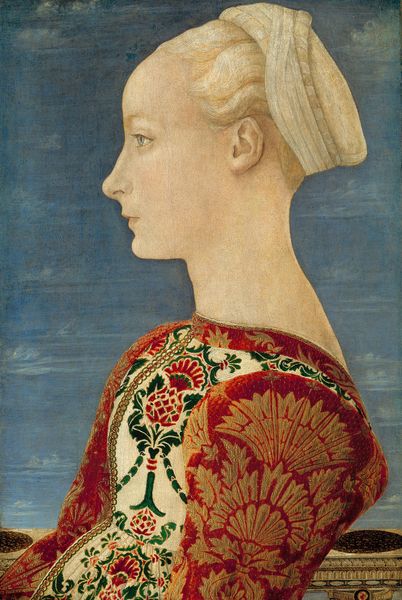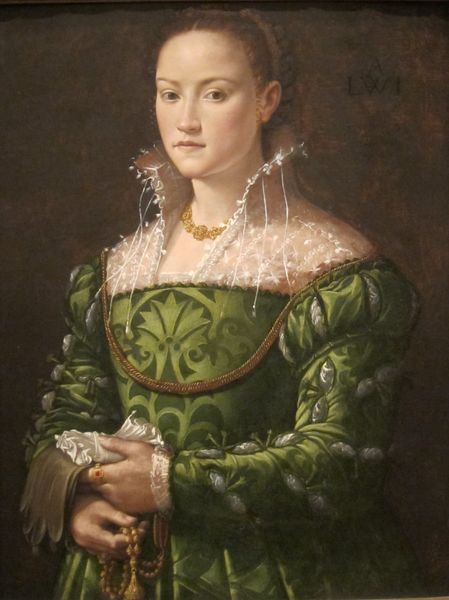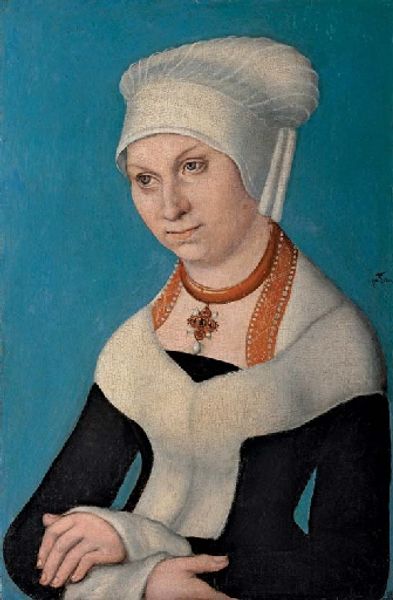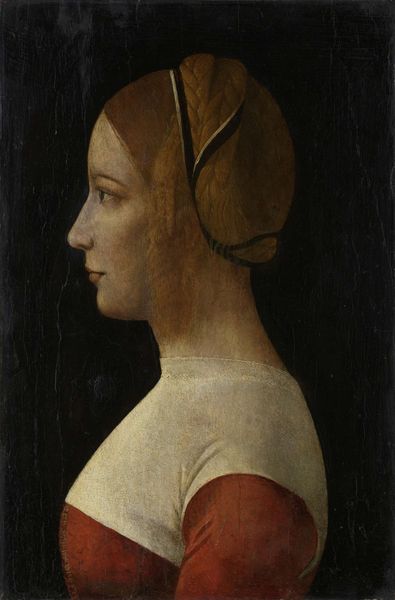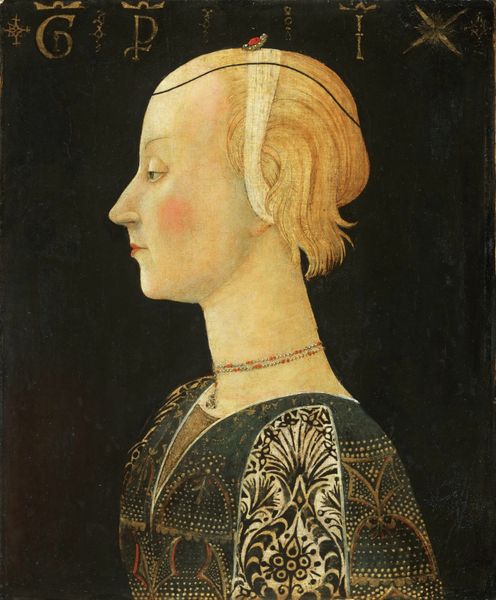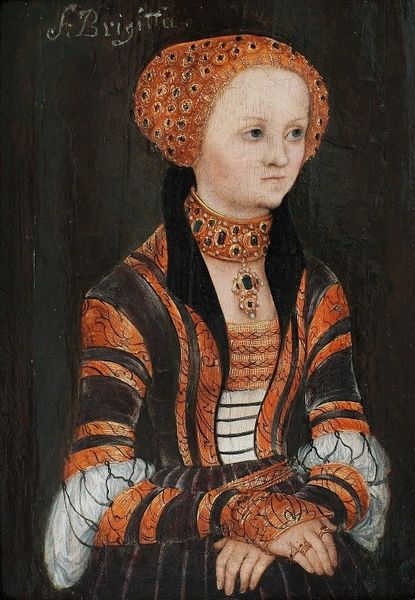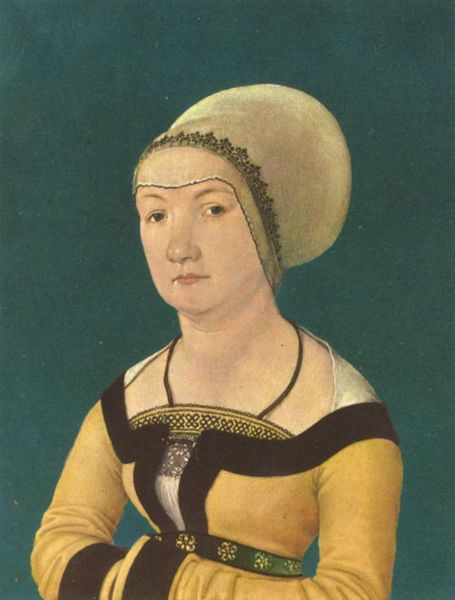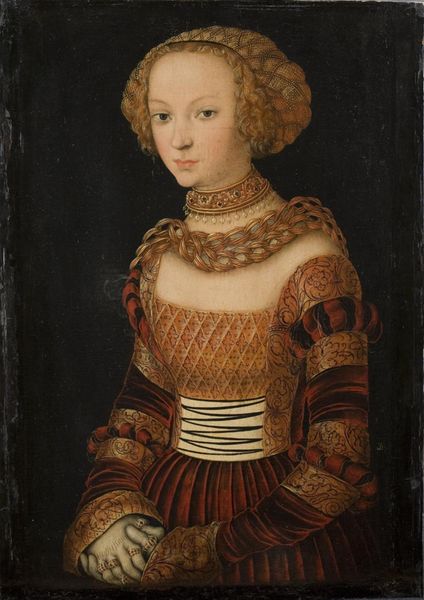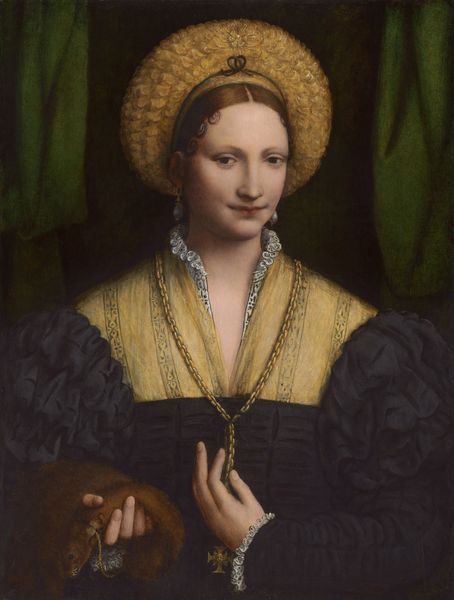
painting, oil-paint
#
portrait
#
figurative
#
portrait
#
painting
#
oil-paint
#
figuration
#
genre-painting
#
history-painting
#
northern-renaissance
Copyright: Public Domain: Artvee
Curator: This is "Portrait of Anna Buchner, née Lindacker," dating from around 1520. It’s an oil painting, attributed to Lucas Cranach the Elder, a prominent artist of the Northern Renaissance. Editor: The immediate impression is of… well, immense wealth. It’s hard to miss the dazzling amount of gold. The way the artist renders it almost steals the show, don’t you think? Curator: It absolutely speaks to the social status of the sitter. Cranach, you see, was very much embedded within the court of the Elector of Saxony, so portraiture was often a political act as much as an artistic one. It’s about asserting power, visually demonstrating wealth and connections within the Saxon social hierarchy. The sitter's clothing, and especially the heavy chains of goldsmith work, would have clearly signaled her family's position in society. Editor: I also can’t help but consider Anna's rather subdued expression, as though she is reserved despite wearing all of the jewellery. This pose seems typical for portraits of the time? Curator: Indeed. Portraits during this period weren't about capturing personality as we understand it today, but about presenting an ideal, and certainly conveying the status and importance of the person represented. Also note her clasped hands, adorned with rings – each one contributing to this demonstration of riches and prominence. We, as viewers, become a part of the very act of upholding and reinforcing societal power structures, particularly when you note that art of this era played a critical role in shaping and propagating the imagery of social status. Editor: It makes you wonder, doesn’t it? What was she thinking? Was she at ease with wearing all of these signs of her power? The story we create to understand these questions lies far beyond what meets the eye, as all stories should. Curator: It certainly encourages such questioning of the art piece and, of the very foundations of history, yes? It is through this interaction between then and now that works such as the "Portrait of Anna Buchner, née Lindacker" spark conversation even centuries later.
Comments
No comments
Be the first to comment and join the conversation on the ultimate creative platform.
